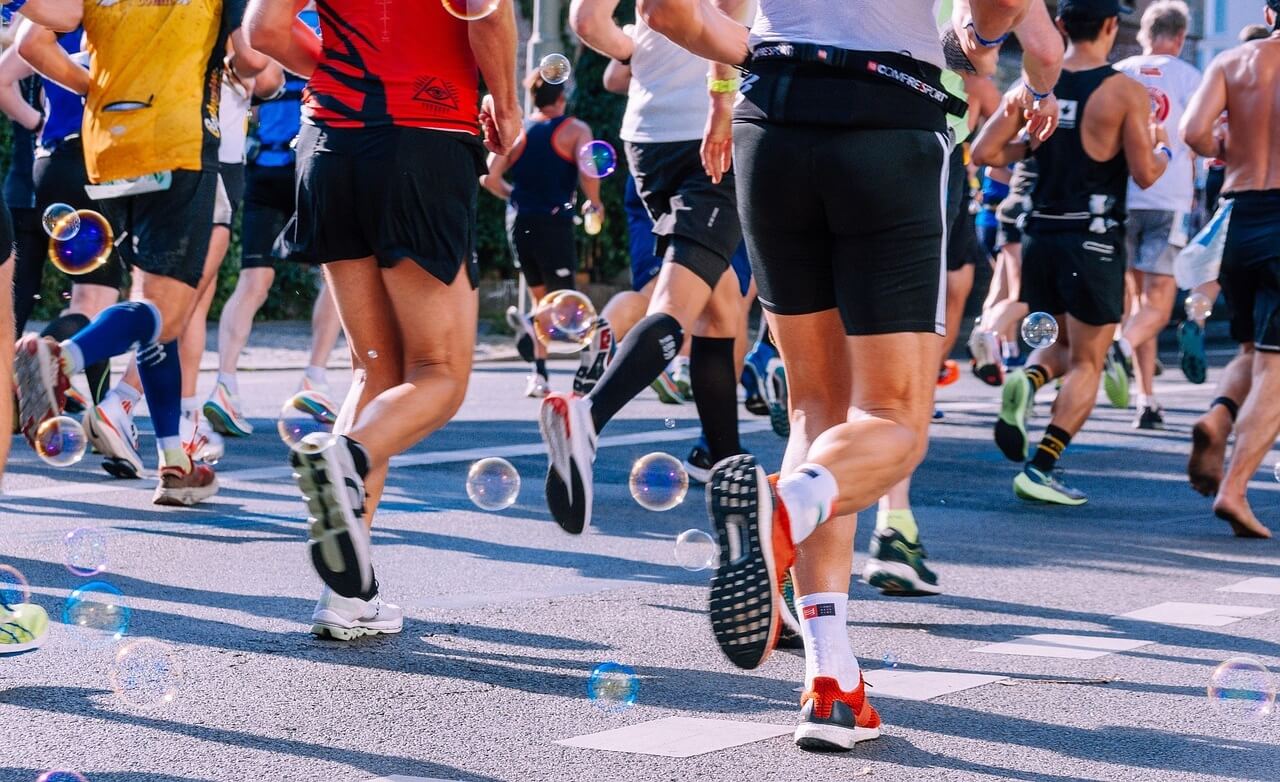Hydration is essential for marathon participants. At 26.2 miles, marathons are one of the most physically taxing undertakings a person can take on. An insufficient water supply during the event can not only mean the difference between finishing and not finishing the race, but it can also mean a visit to the hospital from dehydration.
If you’re organizing a marathon, keeping runners hydrated should be at the top of your list of priorities. You need quick hydration solutions that keep participants on track while still keeping them hydrated. Addressing hydration solutions when planning a marathon prevents heat-related illnesses, dehydration, and a drop in performance.
Our guide offers quick hydration solutions, supports athletes, and enables you to create the best possible circumstances for participants.
What Are the Hydration Needs of Marathon Runners?
Before deciding how to hydrate runners, it’s essential to understand their needs during the event.
Addressing hydration needs requires consideration of two factors: physical exertion from an intense athletic endeavor and external issues, such as weather, humidity, and the terrain of the marathon course.
Physical exertion leads to rapid fluid loss through sweat, while external factors like heat or uneven terrain can increase that loss even more. Both elements place heavy demands on the body, and failing to account for them can put runners at risk.
On a typical day, an adult would need at least 1.89 liters of water to stay hydrated. During a marathon, they could need at least double that amount to maintain hydration.
When creating a hydration plan for runners, event organizers must address both factors. In addition to supplying clean drinking water, it might also help to offer electrolyte options that further enhance hydration.
Water Placement and Distribution
Now that you understand how much water runners need and how running a marathon affects their hydration, you can think about the strategic placement of water supply during the event.
Ideally, you’ll have hydration options about every 5 km. Events held during higher temperatures might require closer placement of hydration stations, and you should consider placing hydration stations shortly after more strenuous parts of the race, such as at the top of hills. And of course, there should be plenty of opportunities for hydration at the finish line.
It’s also a good idea to clearly mark hydration options and warn runners that water is ahead. This allows them to plan and pace their run.
Once you’ve determined where to place hydration stations, consider how you’ll distribute water to runners.
Pre-filled ups? Self-filling? Hands-free?
Ask yourself (and possibly volunteers and participants) the following questions when planning:
- Do you want a hands-free option?
- How can we reduce congestion?
- How will we deal with trash/waste?
- Will we supply plain water or enhancements, such as electrolytes?
Mobile Hydration Solutions
One of the best options you have for keeping runners hydrated during a marathon is mobile water stations. They offer a quick, convenient, and clean option for supplying water to event participants. They’re also one of the best options for reducing plastic waste, as you won’t need to worry about single-use plastic water bottles.
Mobile water stations are easy to use, so you don’t need to worry too much about training staff and volunteers. Once the stations are set up, they simply fill cups of water and hand them out to runners.
Don’t forget: volunteers and staff also need to stay hydrated. They might not be undergoing the physical exertion, but if they’re standing out in the heat and sun, staying hydrated is still important. Make sure you calculate their hydration needs into your water supply when planning.
Dealing with Emergencies
The goal of planning for the hydration needs of marathon participants is one of the best ways to prevent emergencies. However, it’s still important to know the signs and symptoms of heat- and dehydration-related emergencies, just in case.
Signs of dehydration include:
- Thirst
- Dry mouth or lips
- Decreased urine output
- Fatigue
- Headache or lightheadedness
- Muscle cramps
- Confusion or difficulty concentrating
- Rapid heartbeat or dizziness
It’s also a good idea to set up medical tents near some of the hydration points along your route. These stations can address everything from dehydration to blisters to more serious injuries. Also, alert local EMS and/or hospitals that you’re planning a marathon so they can staff appropriately.
Renting or Buying Hydration Stations for a Marathon
If you’ve decided that a hydration station is the best way to go when it comes to hydrating marathon runners, we can help. Learn how Quench Buggy can support your event’s hydration needs. Book a quick call with our team.

